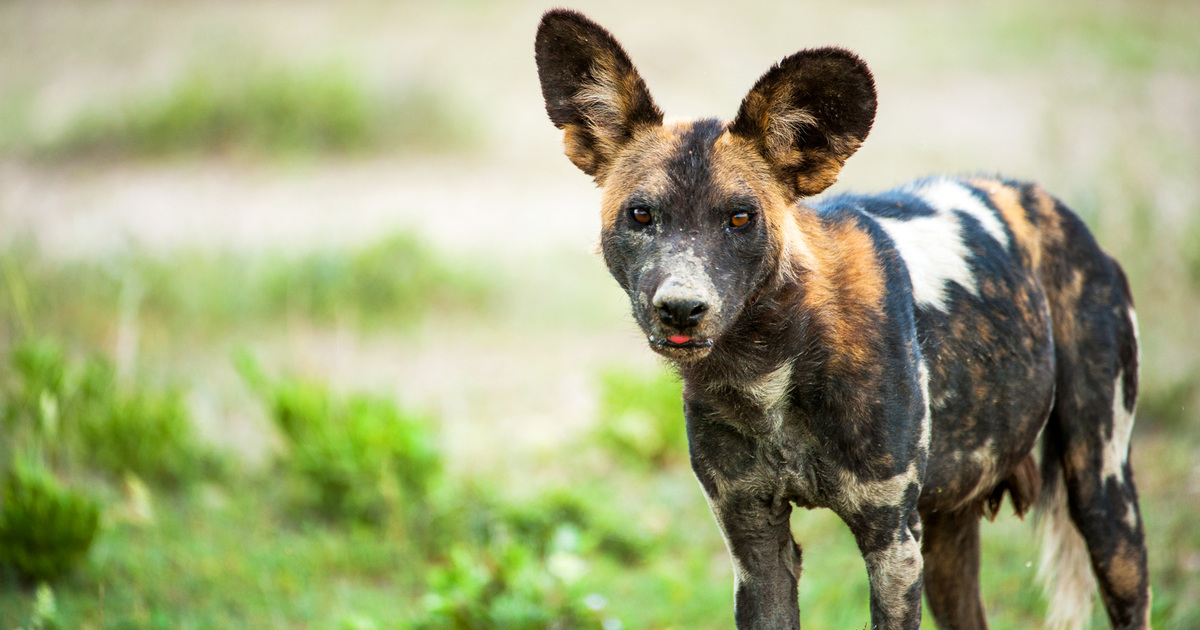
Also known as the golden-rumped sengi, the golden-rumped elephant shrew (Rhynchocyon chrysopygus) is a small, insectivorous mammal native to southern coastal Kenya, found in forests, dense woodlands, and thickets. It has been classed as endangered since 1996. There are an estimated 13,000 of these elephant shrews remaining, and the primary threat to their survival is habitat loss due to land clearing and logging.
East African oryx
Also known as the beisa, the East African oryx is a medium-sized antelope species found in Kenya, Ethiopia, Tanzania, and South Sudan. While it once ranged as far north as Sudan and Eritrea and westward into Uganda, it is considered possibly extinct in these countries. There are 11,000 to 13,000 East African oryx left. Hunting for its meat and hides poses a major threat to this species, as does human and livestock encroachment. They’ve been listed as endangered since 2018.
Forest gecko
In the genus Ancylodactylus, there are three endangered species, all of which are found in Kenya—the Kenya forest gecko (Ancylodactylus kenyaensis), Kitui forest gecko (Ancylodactylus kituiensis), and Chyulu Hills pygmy forest gecko (Ancylodactylus chyuluensis). These species have limited ranges in central and southern Kenya. Deforestation, livestock grazing, firewood collection, harvesting of rock ballasts, and wildfires all pose threats to forest geckos. All three species were first assessed by the IUCN in 2022, and their population numbers are unknown.
Sokoke scops owl
Sokoke scops owls (Otus ireneae) are the smallest scops owls in the world. They can be grey, brown, or red-orange in colour, and they are found in forests of southeastern Kenya and northeastern Tanzania. There are 2,500 to 10,000 of these owls remaining, and they’ve been classed as endangered since 2000. Unsustainable—and often illegal—collection of wood has likely limited the Sokoke scops owl’s ability to breed. The forest in which they live is also affected by titanium mining.
Additionally, climate change is taking its toll on this species, as it’s causing more irregular weather patterns and droughts. Researchers estimate that climate change will reduce their habitat by 64% by 2080.
Giant thicket rat
The giant thicket rat (Grammomys gigas) is a rodent found in the tropical forest and high-altitude shrubland of Mount Kenya. This rat measures about 132 milimetres (5.2 inches) long and has a 201-milimetre (7.9-inch) tail. Since 1996, the giant thicket rat has been listed as endangered. Unfortunately, its habitat is experiencing deforestation for timber, firewood, and conversion to agricultural land.
Irangi puddle frog
The Irangi puddle frog (Phrynobatrachus irangi) is a brown frog with light orange markings. Their name refers to Kenya’s Irangi Forest, one of two locations where they are found, and the fact that they may breed in temporary bodies of water like puddles.
From 2004 to 2020, this frog was listed as endangered, but it has since been reassessed as critically endangered. The subpopulation that was once found in Kimandi, Kenya, is now possibly extinct due to tea farming in their habitat—it hasn’t been seen in this area in over 40 years. This species may also be affected by dams and climate change.
How can you help?
Over 10,000 animal species worldwide are endangered or critically endangered. Most often, human activity and anthropogenic climate change threaten the survival of endangered wildlife.
IFAW is pioneering innovative solutions to climate change and works in Kenya and around the world to protect animals through rescue and rehabilitation, conservation, community engagement, and policy. In the Amboseli-Tsavo-Kilimanjaro landscape of East Africa, we are working to enhance habitat connectivity for elephants through our Room to Roam initiative. We are also empowering local communities in this landscape to live peacefully alongside wildlife, mentoring and mobilising over 50 local wildlife conservancies. We’re also working to safeguard Kenya’s coastal ecosystems through community-led conservation initiatives and combatting illegal wildlife trade in Kenya and Tanzania.
In addition, IFAW is empowering women in Kenya to develop wildlife-friendly livelihoods. Through our Jenga Mama project, 60 women from a rural community gained access to three-year vocational training in various careers. We also established Team Lioness, one of the first all-women wildlife ranger units in Kenya.
